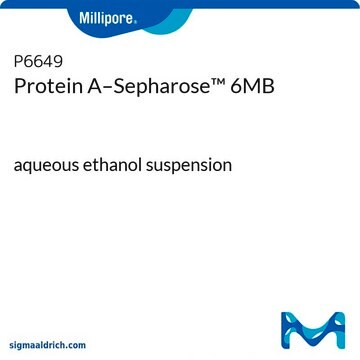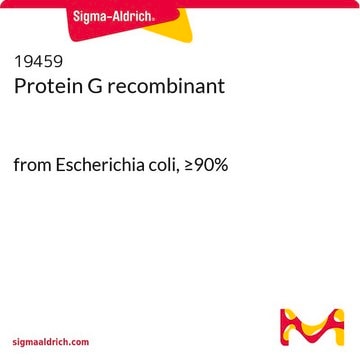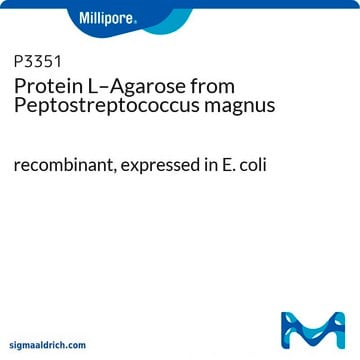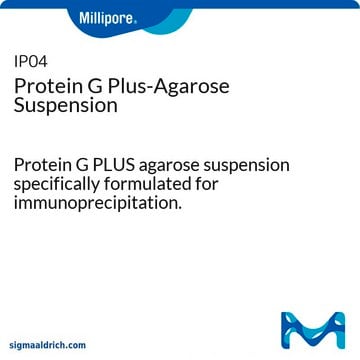P3296
Protein G Sepharose™, Fast Flow
recombinant, expressed in E. coli, aqueous ethanol suspension
Sinonimo/i:
Protein G-Agarose, Fast Flow from Streptococcus sp.
About This Item
Prodotti consigliati
Ricombinante
expressed in E. coli
Forma fisica
aqueous ethanol suspension
Classi chimiche degli analiti
proteins (Immunoglobulins of various mammalian species)
Grado di funzionalizzazione
~2 mg per mL
tecniche
affinity chromatography: suitable
Matrice
Sepharose 4B Fast Flow
Attivazione matrice
cyanogen bromide
Gruppi immobilizzati alla matrice
amino
Braccio spaziatore
1 atom
Temperatura di conservazione
2-8°C
Cerchi prodotti simili? Visita Guida al confronto tra prodotti
Categorie correlate
Descrizione generale
P3296-5Ml′s updated product number is GE17-0618-01
Applicazioni
Stato fisico
Nota sulla preparazione
Note legali
Prodotti correlati
Avvertenze
Warning
Indicazioni di pericolo
Consigli di prudenza
Classi di pericolo
Flam. Liq. 3
Codice della classe di stoccaggio
3 - Flammable liquids
Classe di pericolosità dell'acqua (WGK)
WGK 3
Punto d’infiammabilità (°F)
115.0 °F - closed cup
Punto d’infiammabilità (°C)
46.1 °C - closed cup
Certificati d'analisi (COA)
Cerca il Certificati d'analisi (COA) digitando il numero di lotto/batch corrispondente. I numeri di lotto o di batch sono stampati sull'etichetta dei prodotti dopo la parola ‘Lotto’ o ‘Batch’.
Possiedi già questo prodotto?
I documenti relativi ai prodotti acquistati recentemente sono disponibili nell’Archivio dei documenti.
I clienti hanno visto anche
Protocolli
Techniques for protein antigen molecular weight determination, protein interactions, enzymatic activity, and post-translational modifications.
Il team dei nostri ricercatori vanta grande esperienza in tutte le aree della ricerca quali Life Science, scienza dei materiali, sintesi chimica, cromatografia, discipline analitiche, ecc..
Contatta l'Assistenza Tecnica.












